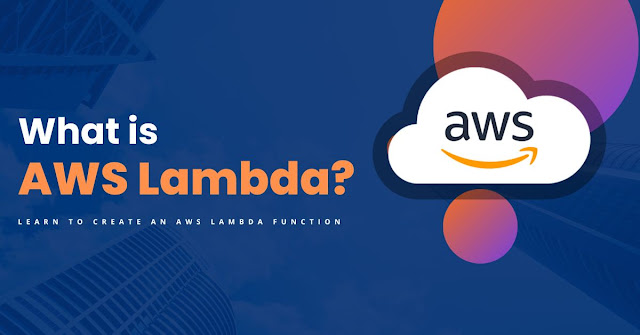What is AWS Lambda, How to create an AWS Lambda function?
What is AWS Lambda?
Special features of Lambda is, you can run your application’s back-end services for virtually.
How AWS Lambda works?
Lets’ see the AWS Lambda process in five steps
Steps:1
Build your application code in programming languages such as Java, Python, Ruby, Go, C#, etc.
Steps:2
Create an AWS Lambda account and login into the server portal.
Steps:3
Create an AWS Lambda function and upload your code in the created function.
Steps:4
After that, AWS services triggers the events in lambda function,
Steps:5
When it's getting triggered, Lambda function gets executed and run the application code by runtime.
What is events in AWS Lambda?
The event is a document which contains JSON format data for AWS Lambda function. This event gets converted into an object and moves to a function code by the runtime.
Events can be triggered by many AWS services, that is:
Amazon S3
Amazon API Gateway
Dynamo DB
Amazon SNS
Amazon Kinesis
CloudFront
Amazon SES
Cloud Trail and more.
Runtime
To work on AWS Lambda, you need to be familiar with specific programming languages. Lambda supports several run time and programming languages, that is:
Node.js runtime
Python runtime
Ruby runtime
Java runtime
Go runtime
.NET runtime
Events that trigger Lambda function:
Insert, updating and deleting data Dynamo DB table
To include push notifications in SNS
To search for log history in CloudTrail
Entry into an S3 object
DynamoDB can trigger AWS Lambda whenever there is data added, modified, and deleted in the table.
Helps you to schedule the event to carry out the task at regular time pattern.
Modifications to objects in S3 buckets
Notifications sent from Amazon SNS.
AWS Lambda can be used to process the CloudTrail logs
API Gateway allows you to trigger AWS Lambda on GET/POST methods.
Cost of AWS Lambda
Cost is based on two parameters, that are:
Request
Time
In free trial period, you will get 1million free requests and 3 million seconds of computing time.
Features of Lambda
Concurrency and scaling control
Functions defined as container images
Code signing
Lambda extensions
Function blueprints
Database access
File systems access
Benefits of AWS Lambda
Minimized cost
Automatic Scalability
Killer Use Cases
Quicker Iterative Development
Less Operational Management
Consolidate Functionality
Best customer services
It charges, when the function executes
Conclusion
We have learned the basic information about AWS Lambda. This blog covers what is AWS, AWS Lambda function, how it works, process, events, services, and benefits.
If you want to know more about AWS in detail, check out this essential beginner guide of AWS Lambda made by AWS professionals of The Knowledge Academy.

Comments
Post a Comment